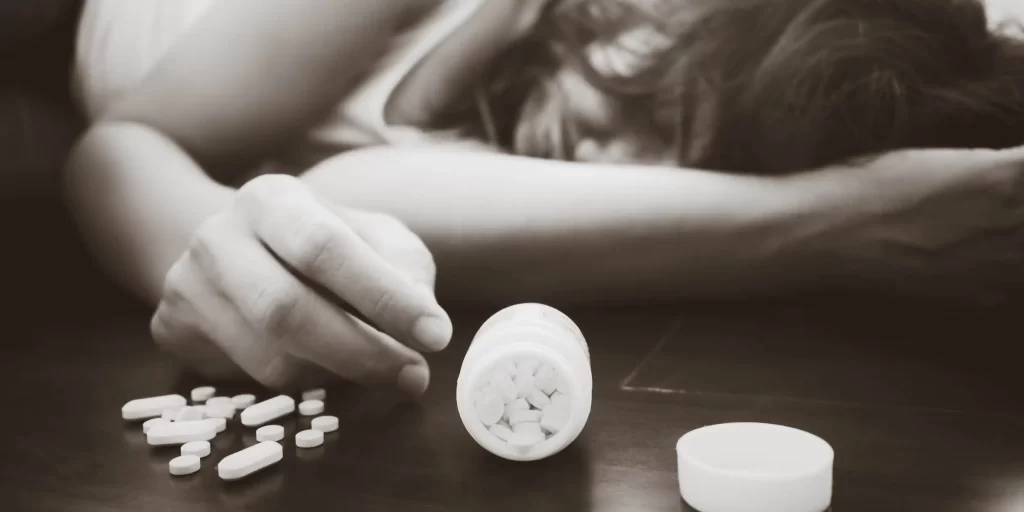Morphine Overdose: Signs, Symptoms & Treatment
Written by Thomas Christiansen
& Medically Reviewed by Dr. Bonnie Bullock, PHD
Medically Reviewed
Up to Date
Last Updated - 6/17/2022
View our editorial policy
Since the 1800s, morphine has been used for pain relief. Originally, morphine was synthesized to combat opium addiction that was rampant in the 19th century. It was eventually discovered that morphine was even more addictive than opium.
Today, morphine remains one of the most well-known painkillers. Medical professionals prescribe morphine during and after surgeries or for other health-related complications. However, unless morphine is administered by a medical professional, using the drug recreationally or incorrectly can have serious consequences.
People need to be able to recognize the signs and symptoms of a morphine overdose. Knowing how to treat an individual who is overdosing from morphine could save their life.
Insurance May Cover the Cost of Rehab
Cost should not stop you from getting the help you need. See if your insurance is accepted at The Recovery Village.
Morphine Overdose Symptoms
In general, most opioids have similar effects on a person’s body. Opioids act directly on receptors in the brain that regulate breathing. Therefore, if a person overdoses on morphine, they may experience slowed or stopped breathing. Other morphine overdose sympotms include:
- Losing consciousness
- Falling or slumping over
- Losing balance
- Decreased pupil size
Signs of Morphine Overdose
Some of the signs of a morphine overdose may be difficult for people to recognize at first. However, individuals prescribed morphine or those who are known to use the drug should be monitored by friends and family for any abnormal behavior or symptoms. Besides slow breathing, decreased pupil size or losing consciousness, individuals can look for specific signs of a morphine overdose including:
- Decreased responsiveness
- Drowsiness that does not ease with time
- Fever
- Elevated blood pressure
- Intense thirst
- Extreme body cramps, aches, pains or spasms
- Lack of body movement
- Abnormal tiredness
- Limbs swelling
- Rapid weight gain
Morphine Overdose Risk Factors
It is possible for anyone to overdose on morphine, even individuals to that are prescribed the drug and use it correctly. Some of the risk factors that increase the chances of overdosing on morphine include:
- People with an addiction to morphine
- Individuals that use other opioids
- People who have a reduced tolerance for morphine (e.g., those that have recently detoxed or stopped regular morphine usage)
- Individuals who inject morphine
- People taking high-dose prescription morphine
- People using morphine in combination with other opioids, alcohol or sedatives
- Individuals using morphine while having underlying medical conditions that require consistent treatment (e.g., HIV or depression)
- Having a history of substance abuse
- Having numerous prescriptions at the same time
- Having more than one mental health condition
How Much Morphine Does It Take to Overdose?
It is difficult to know exactly what dose of morphine leads to an overdose. This uncertainty is because every person has a different medical history and a different tolerance to drugs. The amount of morphine that causes an overdose varies for each person.
Additionally, the dose of morphine needed to overdose is directly related to how the drug is administered. For example, if morphine is injected into the bloodstream versus ingested orally, this may dramatically affect the dosage at which an overdose occurs. Typically, morphine is offered in tablet form as an immediate release pill ranging from 15 mg to 30 mg per dose, given every four hours for managing pain. Altering any prescription provided by a medical professional puts the patient at risk of overdosing.
Morphine Overdose Treatment
Because an overdose can be fatal, knowing treatment options for a morphine overdose can save someone’s life. Drugs known as opioid antagonists “antagonize” the action of opioids by binding to receptors in the brain and other parts of the body. Essentially, by outcompeting opioids for binding, antagonists prevent the dangerous and negative consequences associated with opioid overdoses.
Naloxone (brand name Narcan) is a common opioid antagonist that may be the difference between life and death. Naloxone comes in different forms, including intranasal sprays and injections. Emergency medical professionals have naloxone on hand, but the United States Food and Drug Administration (FDA) has also approved intranasal naloxone to be bought without a prescription from drug stores across the nation. In this way, loved ones, acquaintances, friends or family members can buy intranasal naloxone from the drugstore and keep it on them at all times for use in an overdose emergency.
Are you or a loved one struggling with addiction?
Our Recovery Advocates are available 24/7 to help.
Prognosis and Outlook
The prognosis for a morphine overdose can be positive after a drug like naloxone is administered. It is highly recommended that individuals receive treatment for morphine addiction, especially after an overdose. People should consider opioid dependence treatment to address the substance use disorder and prevent another overdose from happening. With an adequate support system, individuals can recover from morphine addiction.
If you or a loved one struggle with a morphine addiction, help is available. Contact The Recovery Village Ridgefield today to speak with a representative about how addiction treatment can help. Take the first step toward a healthier future, call today.
Sources
World Health Organization. “Information sheet on opioid overdose.” August 2018. Accessed August 6, 2019.
View Sources
World Health Organization. “Information sheet on opioid overdose.” August 2018. Accessed August 6, 2019.
Authorship





